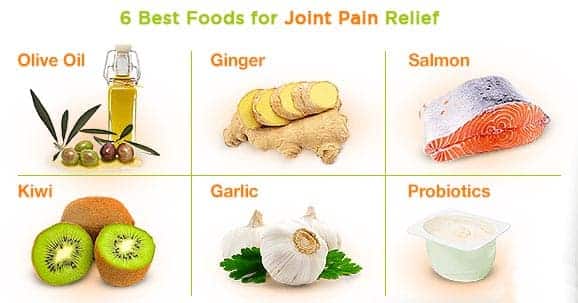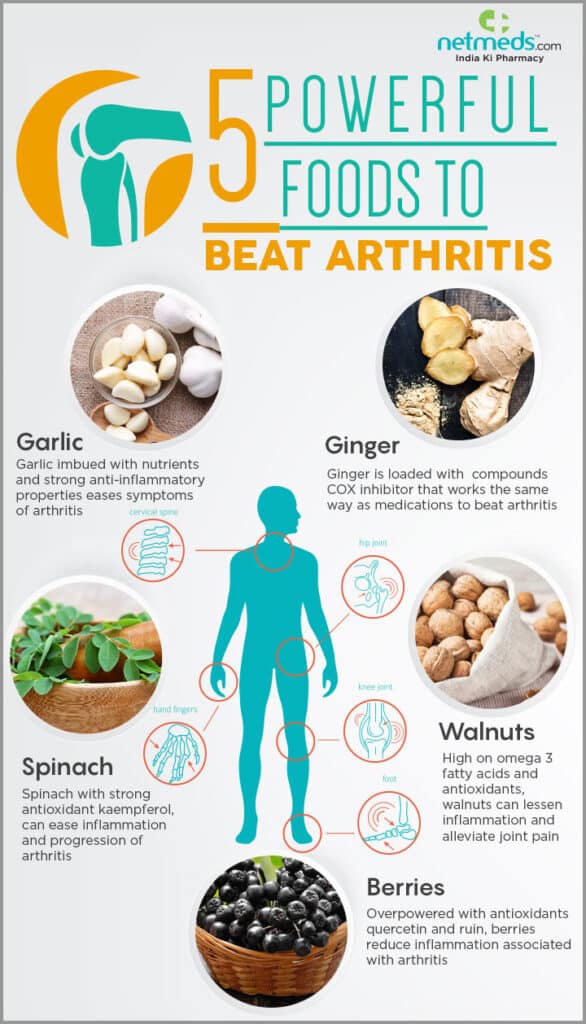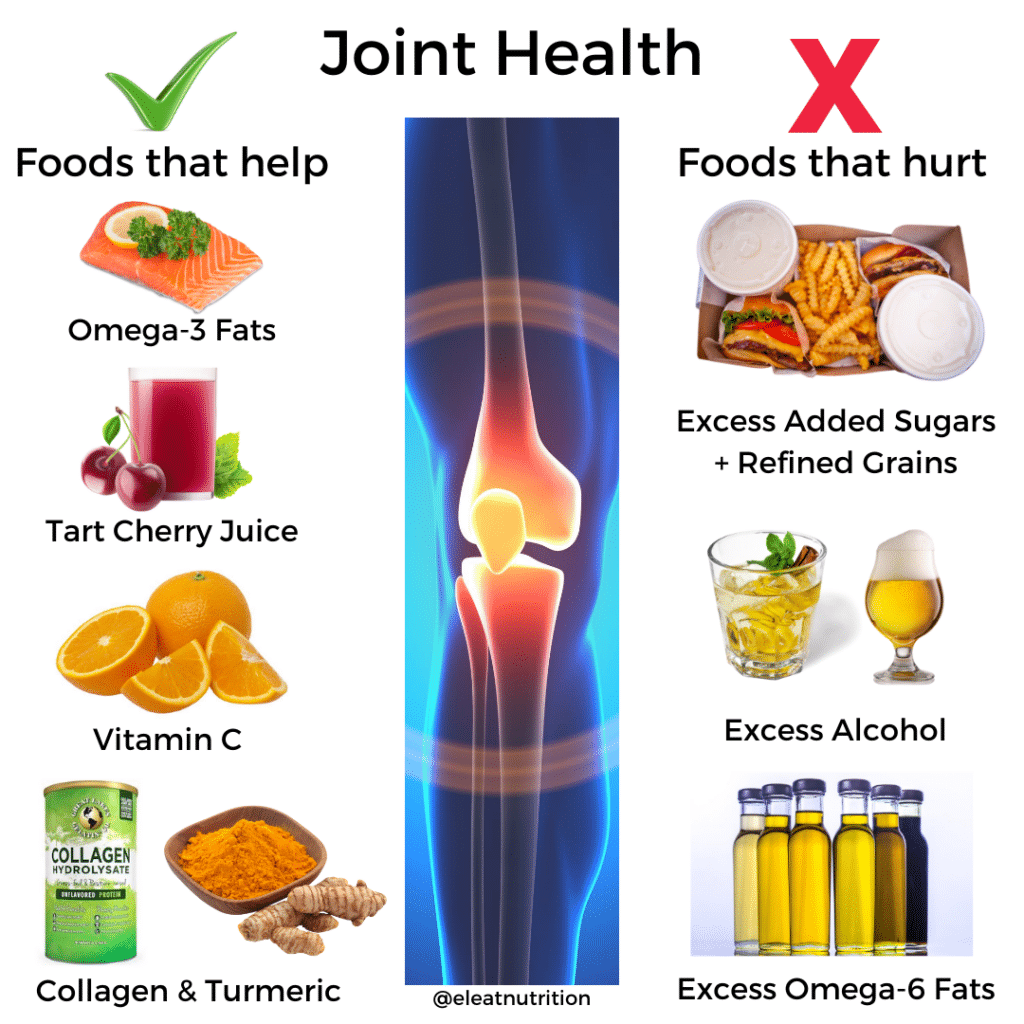Did you know that certain foods can actually help reduce joint pain? It’s true! If you suffer from this common ailment, incorporating certain nutrients into your diet can make a world of difference. From anti-inflammatory foods to those rich in omega-3 fatty acids, there are numerous options that can help alleviate discomfort and promote joint health. In this article, we’ll explore some of the top foods that have been shown to have a positive impact on joint pain. Say goodbye to those aches and pains and make room for a more comfortable, active lifestyle.

Introduction
Living with joint pain can be challenging and affect your overall quality of life. While there are various treatment options available, including medications and physical therapy, incorporating certain foods into your diet can also help reduce joint pain. In this article, we will explore some of the key foods that have been found to have anti-inflammatory properties and provide relief for joint pain. From omega-3 fatty acids to berries, we will delve into the benefits, sources, and ways to incorporate these foods into your meals. So let’s get started on discovering the power of these joint pain-fighting foods!
1. Omega-3 Fatty Acids
1.1 Benefits of Omega-3 Fatty Acids
Omega-3 fatty acids have been extensively studied for their beneficial effects on reducing inflammation, which is often a leading cause of joint pain. These essential fatty acids can help alleviate symptoms of conditions such as rheumatoid arthritis and osteoarthritis. Research suggests that omega-3 fatty acids can help decrease joint tenderness, stiffness, and swelling, leading to improved joint mobility and reduced pain.
1.2 Sources of Omega-3 Fatty Acids
Including omega-3 fatty acids in your diet is relatively easy as there are several rich sources available. Fatty fish like salmon, mackerel, and sardines are excellent sources of omega-3s. Plant-based sources like chia seeds, flaxseeds, and walnuts also provide a good amount of these healthy fats. Incorporating these foods into your meals can help boost your omega-3 intake and potentially reduce joint pain.
1.3 Incorporating Omega-3 Fatty Acids in Your Diet
Adding omega-3 fatty acids to your diet doesn’t have to be complicated. Try incorporating fish into your weekly meal plan by grilling or baking salmon, mackerel, or sardines. You can also sprinkle chia or flaxseeds into your morning smoothie, yogurt, or oatmeal. Snacking on a handful of walnuts during the day is another simple way to increase your omega-3 intake. By making these small dietary adjustments, you can reap the benefits of these powerful fatty acids and potentially alleviate joint pain.

2. Turmeric
2.1 Curcumin and its Anti-inflammatory Properties
Turmeric is a spice that has gained popularity for its anti-inflammatory properties, primarily due to its active compound called curcumin. Curcumin has been found to possess powerful antioxidant and anti-inflammatory effects, making it a potential natural remedy for joint pain. It inhibits the production of inflammatory molecules in the body and helps reduce pain and swelling in the joints.
2.2 Ways to Include Turmeric in Your Diet
Incorporating turmeric into your diet is easy and can add a flavorful twist to your meals. You can use turmeric powder as a seasoning in various dishes like curries, stir-fries, or even scrambled eggs. Golden milk, a popular beverage made with turmeric and milk, is an excellent way to enjoy the benefits of this spice. Additionally, you can also find turmeric supplements available in the form of capsules or tablets.
2.3 Potential Side Effects and Precautions
While turmeric is generally considered safe, some individuals may experience digestive issues or allergic reactions. It is advisable to start with small amounts of turmeric and monitor your body’s response. Pregnant and breastfeeding women should consult their healthcare provider before adding turmeric to their diet. If you are currently taking any medications, especially blood thinners, it is essential to discuss turmeric supplementation with your doctor to avoid potential interactions.
3. Ginger
3.1 Anti-inflammatory Benefits of Ginger
Ginger is another spice that has been recognized for its anti-inflammatory properties. It contains compounds called gingerols, which have been found to inhibit the production of inflammatory chemicals in the body. By reducing inflammation, ginger may help alleviate joint pain and improve mobility.
3.2 Ways to Add Ginger to Your Diet
There are several ways to incorporate ginger into your diet and enjoy its potential joint pain-relieving benefits. You can add fresh ginger to your tea or hot water and sip on it throughout the day. Ginger can also be grated and added to stir-fries, soups, or smoothies for an added kick of flavor. Alternatively, ginger supplements in the form of capsules or powders are available for those who prefer a more convenient option.
3.3 Considerations and Possible Interactions
While ginger is generally safe for most people, it may cause mild side effects such as heartburn or stomach discomfort in some individuals. It is always a good idea to start with small amounts of ginger and assess your body’s response. If you are taking any medications, especially blood thinners, consult your healthcare provider before consuming ginger or ginger supplements as it may interact with certain medications.

4. Green Tea
4.1 The Role of Green Tea in Reducing Joint Pain
Green tea has gained considerable attention for its potential health benefits, including its role in relieving joint pain. It contains a group of antioxidants called catechins, which have anti-inflammatory properties. Regular consumption of green tea has been associated with a reduction in joint inflammation, leading to decreased pain and improved joint function.
4.2 Tips for Consuming Green Tea for Maximum Benefits
To maximize the potential benefits of green tea for joint pain relief, it is recommended to consume freshly brewed green tea rather than bottled or processed versions. Brewing your own tea allows you to control the strength and quality of the tea. It is also important to note that adding lemon to your green tea can help increase the absorption of catechins due to its vitamin C content.
4.3 Caffeine and Its Impact on Joint Pain
Green tea naturally contains caffeine, which has stimulatory effects on the nervous system. Some individuals may be more sensitive to caffeine than others, and excessive caffeine intake can potentially exacerbate joint pain. If you find that caffeine worsens your joint pain symptoms, consider opting for decaffeinated green tea or limiting your consumption to moderate levels.
5. Garlic
5.1 Anti-inflammatory Properties of Garlic
Aside from adding flavor to your dishes, garlic also possesses anti-inflammatory properties that may help reduce joint pain. Garlic contains compounds that inhibit the production of inflammatory substances in the body, leading to decreased inflammation in the joints.
5.2 Creative Ways of Incorporating Garlic in Your Meals
Adding garlic to your meals is a versatile way to enjoy its potential joint pain-relieving benefits. You can use minced garlic as a seasoning in various recipes, such as pasta sauces, stir-fries, or roasted vegetables. Alternatively, you can roast whole garlic cloves and spread the softened garlic onto bread or crackers. If you are not a fan of the strong flavor of raw garlic, cooking it can mellow out the taste while preserving its beneficial properties.
5.3 Potential Side Effects and Allergies
While garlic is generally well-tolerated, some individuals may experience digestive discomfort, heartburn, or an allergic reaction. If you notice any adverse effects after consuming garlic, it is advisable to reduce the amount or avoid it altogether. If you have a garlic allergy, it is crucial to read food labels carefully and avoid foods that contain garlic or its derivatives.

6. Cherries
6.1 The Role of Cherries in Alleviating Joint Pain
Cherries, particularly tart cherries, have been found to have potential anti-inflammatory properties and may help reduce joint pain. They contain compounds called anthocyanins, which give cherries their vibrant red color and possess antioxidant and anti-inflammatory effects. Regular consumption of cherries or cherry juice has been associated with a reduction in arthritis symptoms and improved joint function.
6.2 Fresh Cherries vs. Cherry Juice: Which is Better?
Both fresh cherries and cherry juice can provide potential benefits for joint pain relief, but the choice ultimately depends on personal preference and availability. Fresh cherries make a delicious and nutritious snack, and you can easily incorporate them into your meals or salads. On the other hand, cherry juice can be a convenient option for those who may not have access to fresh cherries year-round. Just be mindful of the sugar content in cherry juice and opt for unsweetened varieties whenever possible.
6.3 Considerations for Individuals with Gout
It is important to note that cherries, especially tart cherries, contain compounds that can increase uric acid excretion from the body. While this can be beneficial for most individuals, those with gout should exercise caution. In some cases, excessive consumption of cherries may trigger gout attacks. If you have gout or a history of gout attacks, it is advisable to consult with your healthcare provider before incorporating cherries into your diet.
7. Broccoli
7.1 Sulforaphane and Its Anti-inflammatory Benefits
Broccoli, and other cruciferous vegetables like cauliflower and Brussels sprouts, contain a compound called sulforaphane, which has been found to possess anti-inflammatory properties. Sulforaphane helps activate antioxidant and detoxification enzymes in the body, reducing inflammation and potentially alleviating joint pain.
7.2 Optimal Cooking Methods to Retain Nutritional Value
To retain the maximum nutritional value of broccoli, it is best to cook it using methods like steaming or stir-frying. These methods help preserve the beneficial compounds while maintaining the vegetable’s texture and flavor. Boiling broccoli for an extended period can lead to nutrient loss, so it is advisable to limit boiling time if you choose this cooking method.
7.3 Broccoli and Digestive Health
In addition to its potential anti-inflammatory benefits, broccoli is also rich in dietary fiber, which promotes digestive health. A healthy digestive system plays a crucial role in overall well-being, including joint health. By including broccoli in your meals, you can support both your digestive health and potentially alleviate joint pain.

8. Berries
8.1 Antioxidant Properties of Berries
Berries, such as strawberries, blueberries, and raspberries, are packed with antioxidants that can help fight inflammation and reduce joint pain. These antioxidants, including anthocyanins and vitamin C, have been found to have anti-inflammatory effects and protect against oxidative stress, which can contribute to joint pain.
8.2 Popular Types of Berries for Joint Pain Relief
While all berries offer potential health benefits, some varieties have higher levels of specific antioxidants. Tart cherries, mentioned earlier, are particularly beneficial for joint pain relief due to their high anthocyanin content. Blueberries and strawberries are also rich in antioxidants and can be easily incorporated into your diet.
8.3 Potential Benefits for Osteoarthritis Patients
Research suggests that regular consumption of berries may offer benefits for individuals with osteoarthritis, a degenerative joint disease. The antioxidants in berries can help protect cartilage cells and reduce inflammation, which are key factors in osteoarthritis progression. By including berries in your diet, you can potentially support joint health and mitigate osteoarthritis symptoms.
Conclusion
Incorporating specific foods into your diet can be a natural and delicious way to reduce joint pain and improve your overall joint health. From omega-3 fatty acids found in fatty fish and plant-based sources to spices like turmeric and ginger, and fruits and vegetables like cherries, broccoli, and berries, there is a wide array of options to explore. By incorporating these joint pain-fighting foods into your meals and snacks, you can potentially alleviate symptoms, improve joint mobility, and enhance your overall well-being. Remember to always consult with your healthcare provider before making any major changes to your diet or starting any new supplements, especially if you have underlying medical conditions or take medications. Here’s to happy, healthy joints!